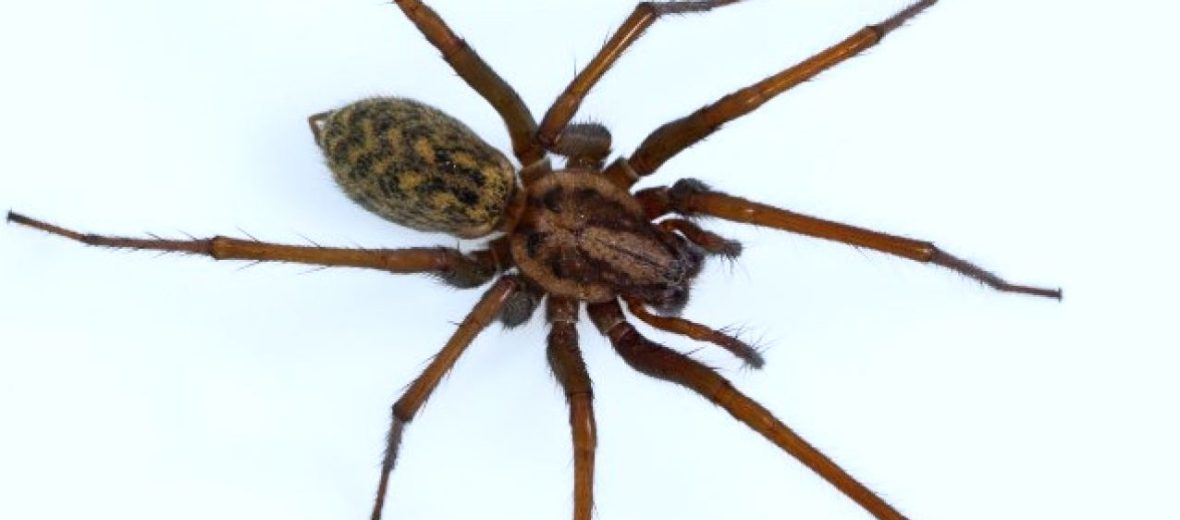
The hobo spider is a member of the family known as funnel web spiders. But don’t confuse these little critters with the deadly Australian funnel-web spider though. But the hobo spider does indeed spin a horizontal, trampoline-like funneled web and waits for prey to happen by. These spiders are found, primarily, in the Pacific northwest, in the United States and Canada.
First the Stats…
Scientific name: Eratigena agrestis
Length: Up to .625 inch, plus up to a 2 inch leg span
Lifespan: Up to 1 year
Now on to the Facts!
1.) These spiders prefer fields, hidden corners of brick buildings, and wood piles.
2.) 1 way to identify these arachnids is by the fact that the abdomen has a chevron (V-shaped) pattern down the middle, with the chevrons pointing towards their head.
3.) Like most other spiders, hobos have 8 eyes. However, their eyesight isn’t that great. Irony at work.
4.) Hobo spiders are also poor climbers so they tend to stay near the ground.
5.) They are nocturnal (active at night).
But wait, there’s more on the hobo spider!
6.) Like many smaller spider species, they have a relatively short lifespan.
7.) The male dies shortly after mating.
Did you know…?
Even though the toxicity of hobo spider bites has been greatly exaggerated, it is uncertain if their bites actually do cause tissue necrosis (tissue death). Their bite feels like nothing more than a pin prick, at most.
8.) Females produce up to 4 egg cases that house up to 100 eggs each.
9.) Bite effects could entail pain, redness, and leg twitching that can last up to 12+ hours. But the effects vary per person. Most of the time the bite leaves nothing more than a red mark that goes away in a day or so.
10.) Praying mantises and mud-dauber wasps prey on hobo spiders.
Now a Short Hobo Spider Video!
Be sure to share & comment below! Also, check out the Critter Science YouTube channel. Videos added regularly!
Want to suggest a critter for me to write about? Let me know here.



